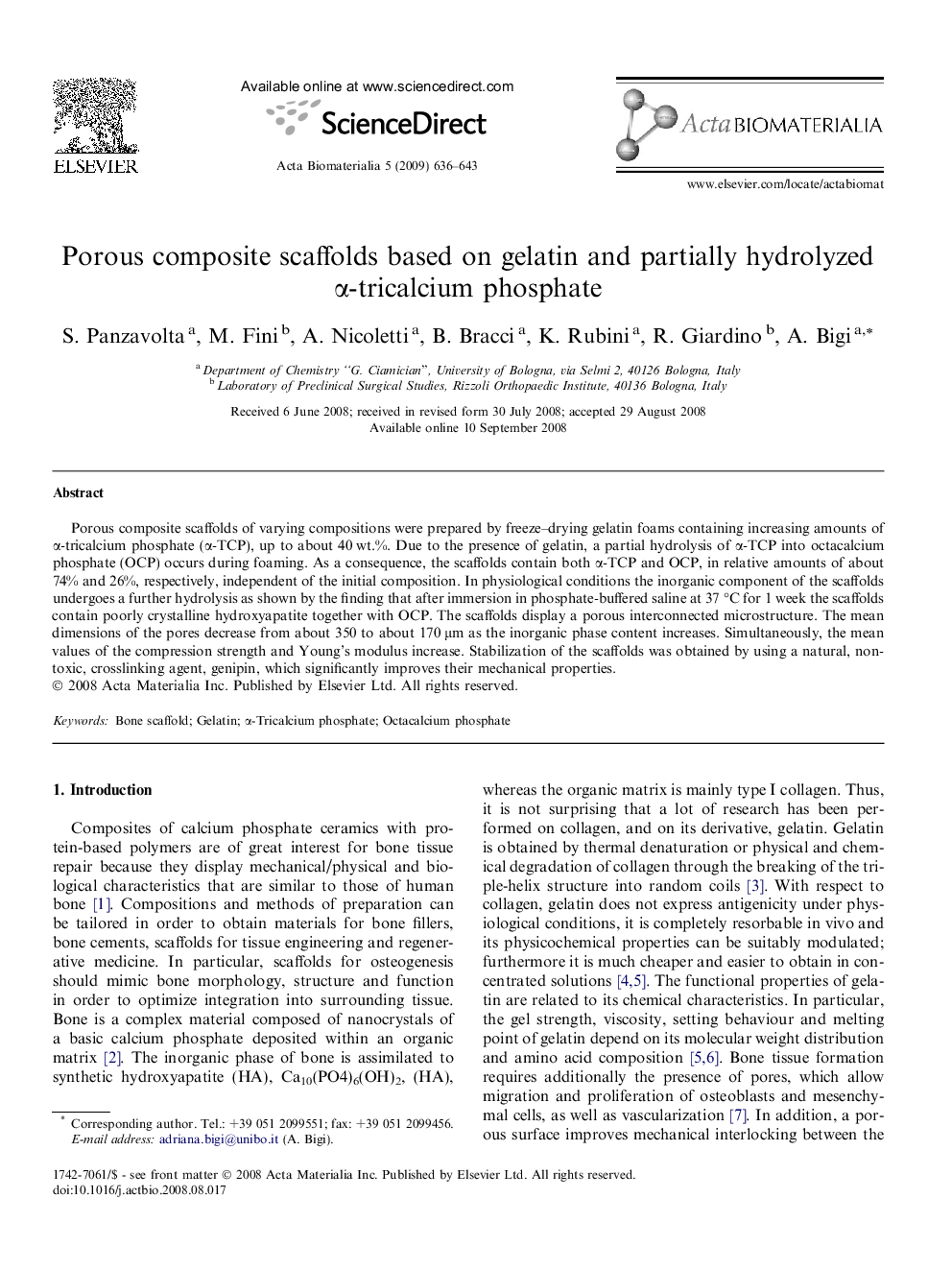| Article ID | Journal | Published Year | Pages | File Type |
|---|---|---|---|---|
| 2605 | Acta Biomaterialia | 2009 | 8 Pages |
Porous composite scaffolds of varying compositions were prepared by freeze–drying gelatin foams containing increasing amounts of α-tricalcium phosphate (α-TCP), up to about 40 wt.%. Due to the presence of gelatin, a partial hydrolysis of α-TCP into octacalcium phosphate (OCP) occurs during foaming. As a consequence, the scaffolds contain both α-TCP and OCP, in relative amounts of about 74% and 26%, respectively, independent of the initial composition. In physiological conditions the inorganic component of the scaffolds undergoes a further hydrolysis as shown by the finding that after immersion in phosphate-buffered saline at 37 °C for 1 week the scaffolds contain poorly crystalline hydroxyapatite together with OCP. The scaffolds display a porous interconnected microstructure. The mean dimensions of the pores decrease from about 350 to about 170 μm as the inorganic phase content increases. Simultaneously, the mean values of the compression strength and Young’s modulus increase. Stabilization of the scaffolds was obtained by using a natural, non-toxic, crosslinking agent, genipin, which significantly improves their mechanical properties.
